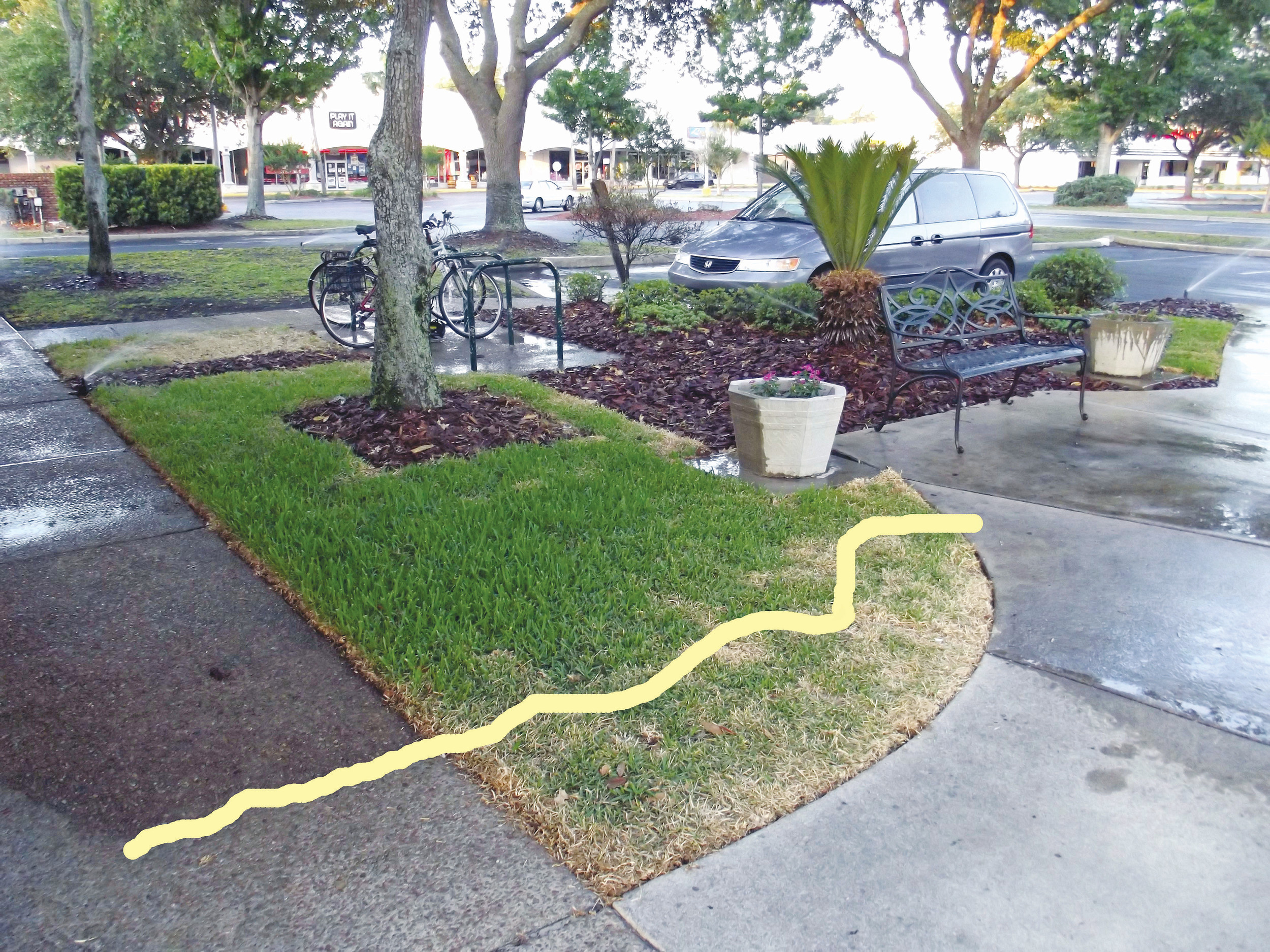Help with St. Augustine Grass
Q: I have a spot in my St. Augustine Grass lawn that has suddenly turned brown and I don’t know why. I treated for chinch bugs but it has not greened up. What should I do?
O.K. – I guess reaction one is that brown is dead and no matter what you do, the grass will not come back. At this point, replacing it is your only option – but wait!
There is a chance it was not a chinch bug issue and replacing the grass would be foolish if it were simply a matter that your sprinkler system just was not reaching that area and so the grass browned from lack of water and not from some pest you can spray away. With this early intense heat and dryness and low water pressures in some neighborhoods, this can happen.
Did you actually see a chinch bug? Don’t spray or have your lawn treated by someone else unless they can show you a chinch bug in the palm of their hand. These are big enough to see and treating for them when they are not there is a waste of money, environmentally unfriendly, and not addressing the real problem.
Step one to a proper brown spot diagnosis should be to put out a straight sided can in the area that is browning and seeing if it gets water in it. Just because your sprinkler system is coming on does not mean it is reaching evenly over an entire area. When water pressures get low (as they are now with everyone watering), it’s common to find sprinklers not reaching as far as they should. Do your testing for 24 hours and see if a half inch (the amount your system needs to put out each time it comes on) gets into that sampling container. If it does not – that is likely the reason for a brown spot in your lawn. When temperatures reach 90º F, it only takes 7-10 days for St. Augustine Grass to become stressed to the point of browning.
Bottom line – it is not a Florida-Friendly approach to maintenance to put down materials that are designed to prevent or control chinch bugs if they are not there! If you do, you will be destroying too many beneficial bugs, which are there to help see that you do not get chinch bugs, and in the meantime you may be helping chemical resistant chinch bugs evolve.
If a spot is dying for lack of water, then once a week place a sprinkler on the end of a hose and give that area supplemental water for 30 minutes or so until we start to have regular rains again or water pressures get back to normal. Having someone come in and retrofit your sprinklers so they are more efficient is even a better approach to solving this irrigation problem. Maybe it is as simple as replacing the existing sprinkler head that waters this area so it is more efficient or reaches farther. Spraying for chinch bugs or fungus that isn’t there is not a good option.







